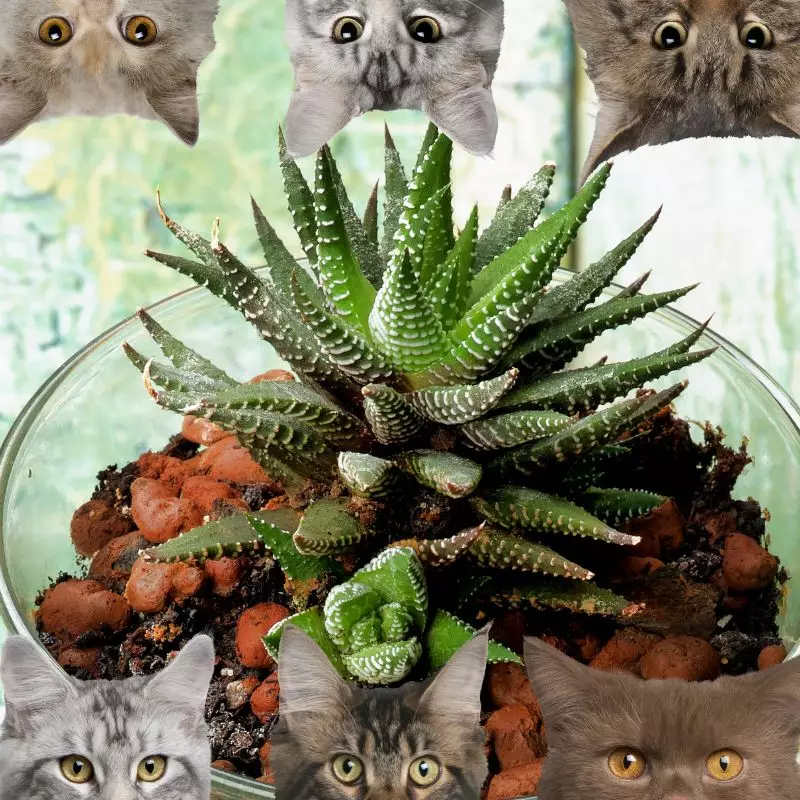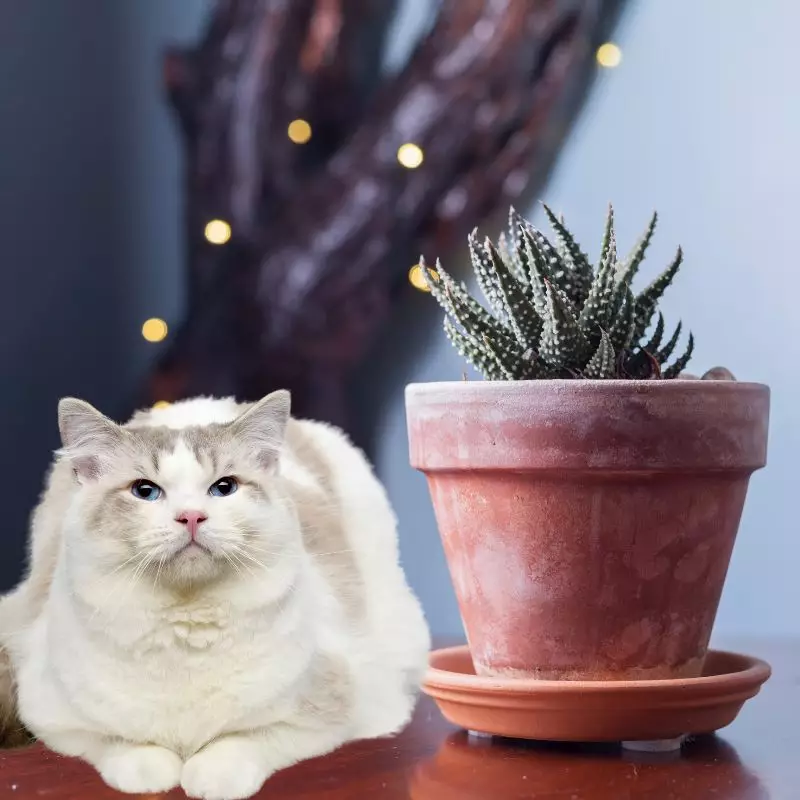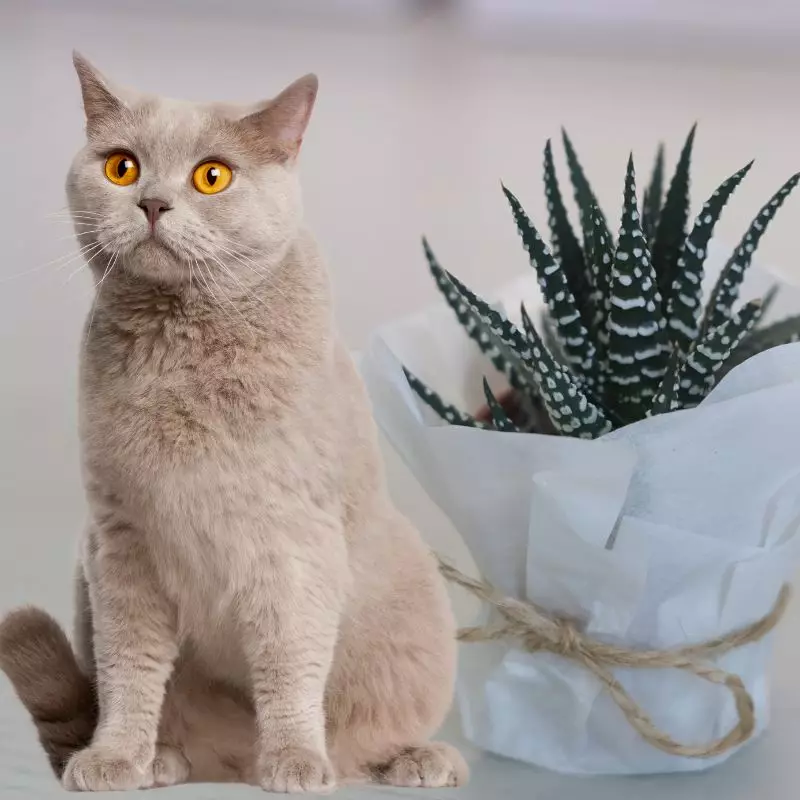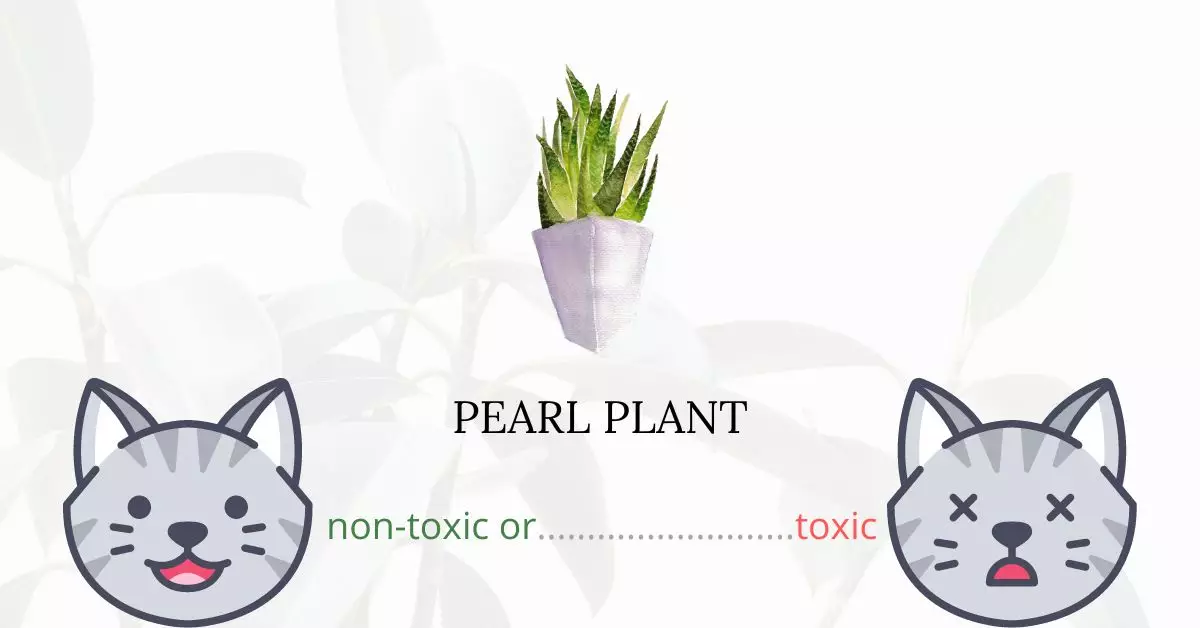No, the pearl plant is not toxic to cats. While it may bear a resemblance to aloe, a plant known to be poisonous for cats and dogs, the pearl plant stands distinct with its non-toxicity. Contrary to some assumptions, most succulents are generally harmless for animals, and the pearl plant, with its zebra-like leaves, is both visually appealing and safe for pets.
This article was diligently crafted in collaboration with a team of experienced DVMs (doctors of veterinary medicine). Their valuable insights ensure we provide you with accurate and up-to-date information concerning the potential risks of various plants. Additionally, we have consulted high-authority websites such as ASPCA and PetMD to corroborate the information presented on every plant, including the Pearl Plant.
Can Cats Eat Pearl Plant?

It’s okay to keep Pearl Plant close to your feline friends. When eaten, the majority of succulents are non-toxic and safe for animals. Some may cause mild symptoms when swallowed, while others may contain skin irritants that might irritate the skin. Even though cats are not thought to be harmed by pearl plants, you should always be aware that eating any plant can cause nausea, vomiting, diarrhea, or constipation. This is especially true if your cat frequently eats houseplants. In sufficient amounts, any substance, food or not, can cause stomach distress.
What is a Pearl Plant?

One of the most eye-catching succulent plant species in the Haworthia genus is the Pearl Plant (Haworthia margaritifera). It is also among the biggest varieties of this easy-to-grow, elegant, slow-growing succulent, commonly known as the “cushion aloe plant” or the fasciata zebra cactus plant. Hawthornia plant is another name for it that you could hear.
These plants can reach heights of 4′′ and widths of 6′′ and have a tight rosette of lovely blue-green leaves and intriguing white tubercles or “pearls” on them. In the spring, they typically flower. The inconspicuous flowers of Haworthia do draw pollinators to their native Southern Africa, though.
Keeping Cats Away From Pearl Plant

Putting your succulent in an open or closed terrarium is a nice idea to keep them safe from your feline buddy especially if you’re into indoor gardening. Make sure they are sturdy and heavy enough so that your pets can’t knock them over.
Another way is to Sprinkle pepper on your succulents, or even better, combine pepper with water and mist your plants with it. With citrus fruits, you can achieve the same results by using diluted lemon juice, orange juice, or white vinegar. If you happen to have essential oils on hand, add 12 to 15 drops of oil to your spray container along with 3/4 of a cup of water. Shake well before using. Repeating the process two to three times each month may be necessary.
Plants to Avoid For Your Cats
If you are a cat owner and unsure if the plants growing in your yard are harmful to your cats, check out this list of toxic plants for cats. You can also check our list of non-toxic plants for cats.





